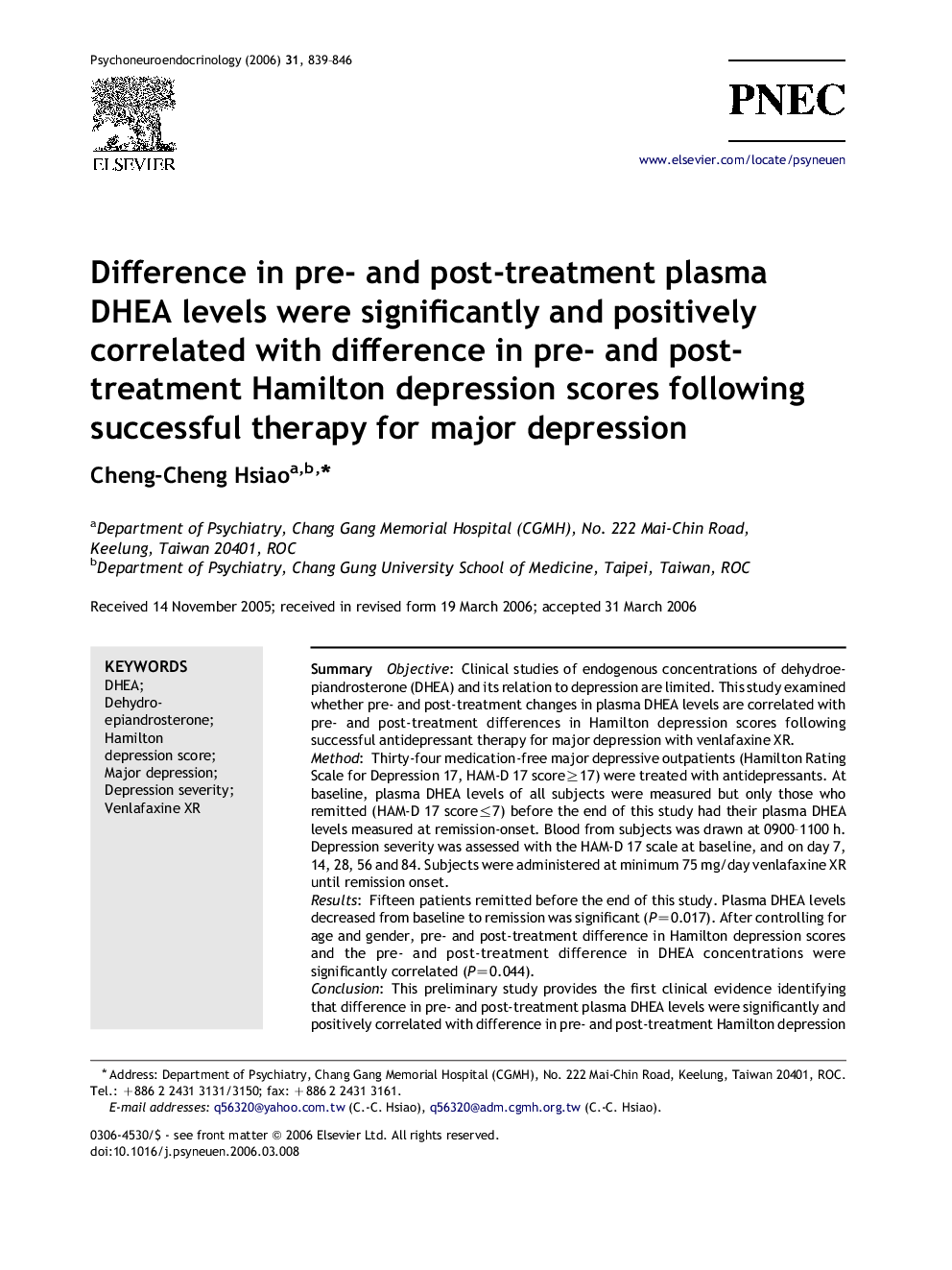| Article ID | Journal | Published Year | Pages | File Type |
|---|---|---|---|---|
| 336654 | Psychoneuroendocrinology | 2006 | 8 Pages |
SummaryObjectiveClinical studies of endogenous concentrations of dehydroepiandrosterone (DHEA) and its relation to depression are limited. This study examined whether pre- and post-treatment changes in plasma DHEA levels are correlated with pre- and post-treatment differences in Hamilton depression scores following successful antidepressant therapy for major depression with venlafaxine XR.MethodThirty-four medication-free major depressive outpatients (Hamilton Rating Scale for Depression 17, HAM-D 17 score≥17) were treated with antidepressants. At baseline, plasma DHEA levels of all subjects were measured but only those who remitted (HAM-D 17 score≤7) before the end of this study had their plasma DHEA levels measured at remission-onset. Blood from subjects was drawn at 0900–1100 h. Depression severity was assessed with the HAM-D 17 scale at baseline, and on day 7, 14, 28, 56 and 84. Subjects were administered at minimum 75 mg/day venlafaxine XR until remission onset.ResultsFifteen patients remitted before the end of this study. Plasma DHEA levels decreased from baseline to remission was significant (P=0.017). After controlling for age and gender, pre- and post-treatment difference in Hamilton depression scores and the pre- and post-treatment difference in DHEA concentrations were significantly correlated (P=0.044).ConclusionThis preliminary study provides the first clinical evidence identifying that difference in pre- and post-treatment plasma DHEA levels were significantly and positively correlated with difference in pre- and post-treatment Hamilton depression scores following successful therapy with venlafaxine XR for major depression in remitters; but non-remitters were not examined. It is not known if DHEA levels would show similar or dissimilar changes in non-remitters.
